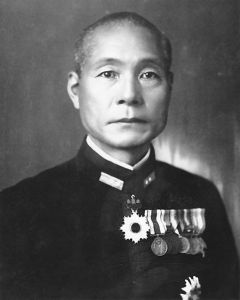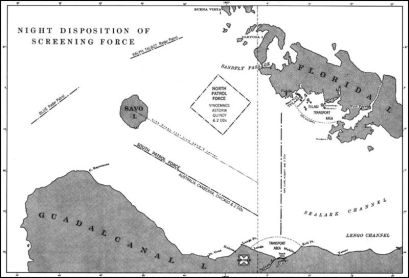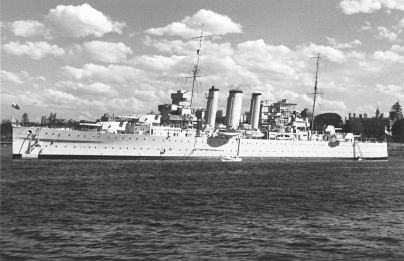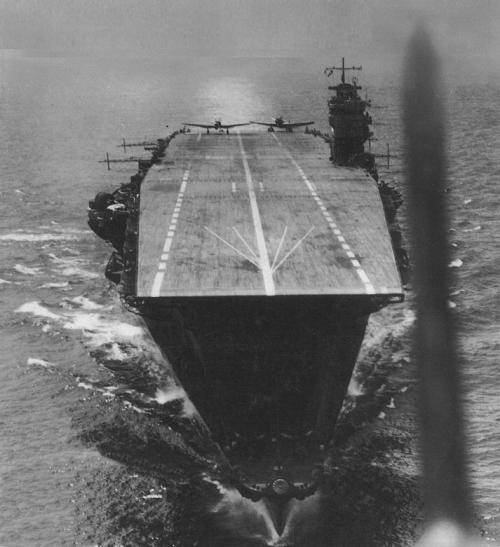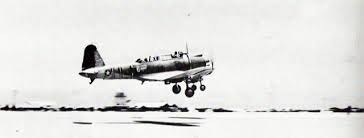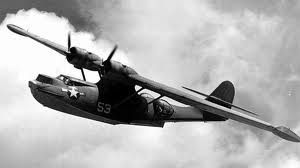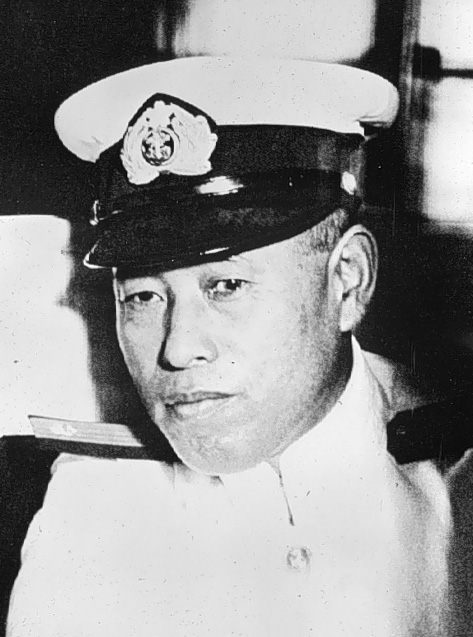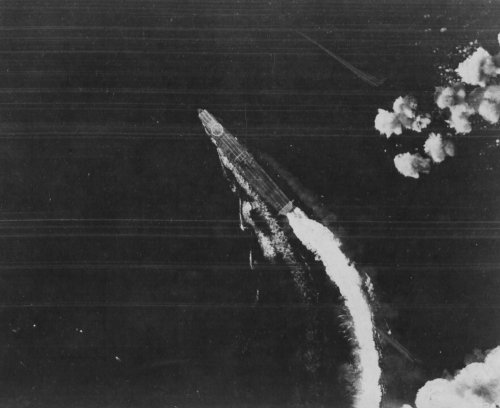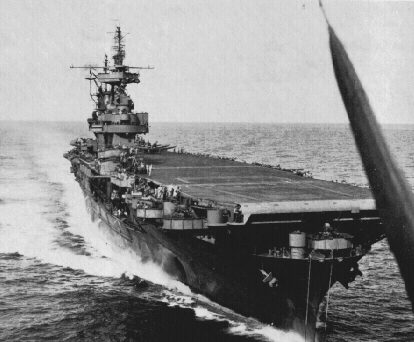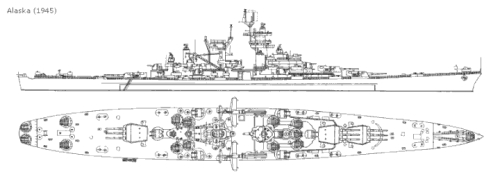Friends of Padre Steve’s World,
I am still on my holiday from writing about the novel Coronavirus 19 and President Trump and his Administration’s incompetent response to it. It is a response that has already claimed 87,000 American lives, and every day more damning evidence shows the results for the President’s use of it for political purposes, almost all of which are backfiring as much as his malfeasance and willingness to see Americans die by the tens of thousands to maintain his cloud-cuckoo-land fantasy that this will go back to normal as if by magic. But, I won’t go any farther tonight on that tonight.
I was so inflamed about what was happening earlier today I decided that it was best to continue my series on the battleships designed and built by the British, French, Germans, Italians, and Americans from after the Battleship Holiday mandated by the Washington Naval Treaty, and the restrictions of the London Naval Treaty. The Germans were not signatories to these treaties as they were already under the much more severe provisions of the Treaty of Versailles, until the Hitler regime began to clandestinely violate it in 1934, and publicly in 1935. The British signed at bilateral naval accord with Germany in June of 1935, which the Germans renounced in 1938 in order to build a fleet of battleships that Hitler believed would allow him to achieve naval parity or superiority over the British, which he renounced in 1938 during the Czechoslovakia crisis.
This is the fifth and last in a series of articles about the battleships built under the provision of the Washington and London Naval Treaty limitations in the 1930s. I am not including the ships which were already in service or completed in the immediate aftermath of the Washington Treaty. That treaty required the British to scrap 23, the Americans 30, and Japanese 17 Battleships or Battlecruisers to comply with the treaty. Some were allowed to be converted to Aircraft Carriers, and some demilitarized to serve as training or target ships.
This series looks at the modern battleships built by the future World War II combatants between 1932 and 1939. This article covers the American South Dakota Class. Previous articles dealt with the British Royal Navy’s King George V Class, The German Kriegsmarine Scharnhorst Class, the Italian Reginia Marina’s Vittorio Veneto Class, the United States Navy’s North Carolina Class, and the French Dunkerque and Richelieu Classes.The German Bismarck, Japanese Yamato, British Vanguard and American Iowa classes will be covered in a subsequent series.
I think that I will also go back and deal with various classes of ships that were allowed to be kept after the Washington Naval Treaty. These included two of the three partially built American Colorado Class, the two ship British Nelson Class, and the second of the Japanese Nagato Class, the Mutsu; and the battleships and battlecruisers that were completed as Aircraft Carriers by the United States, Britain, Japan, and France. From there I could move on and write about and the new battleships and battlecruisers planned or under construction at the time the treaty came into effect, the ships that had they been built would have launched a major naval arms race in the 1920s, something that few nations could have afforded, especially Great Britain. I think I will even go back to the Dreadnoughts and Battlecruisers of the First World War. Of course there are a lot of them, so I will probably focus on the ships that continued serving through the Second World War. I might even delve into the German H type battleships which were more fanciful than realistic, only satisfying the need of Hitler for nothing but the biggest, the American Montana Class, the British HMS Vanguard, the French Alsace Class, and the Japanese A-150 or Super Yamato’s.
Since there is much disagreement about which of the ships that I have written about in this series, I may try to do a comparison to determine which was the best of these classes in the categories, of armament, speed and range, armor protection, reliably, and performance in combat. One has to remember that these were the first battleships built by their respective navies since the First World War, each was built under the constraints imposed by the naval treaties, and their influenced by the developments of potential opponents and the changing world situation. In some cases sacrifices were made on each design due to expediency and the need to get them to the fleet.
As the world edged closer to war in the late 1930s the U.S. Navy followed up its decision to build the two ship North Carolina class battleships with additional fast battleships. Initially the General Board wanted two additional North Carolina’s the Chief of Naval Operations, Admiral William H. Standley wanted a different design, which may have created the toughest and best of the battleships in this series. Compared to the other battleships built in this era, the South Dakota Class was short, fat, a bit slower, but was superbly protected with a well designed armored citadel, excellent main, secondary, and anti-aircraft batteries, and superior radars, fire direction systems and combat operation centers. They demonstrated a knack for survival as well as an ability to inflict damage, as was shown by the South Dakota and Massachusetts.
 USS South Dakota BB-57 in 1943
USS South Dakota BB-57 in 1943
Design work started in 1937 and several designs were proposed in order to correct known deficiencies in the preceding North Carolina class to include protection and the latest type of steam turbines. As in the North Carolina’s the Navy struggled to find the optimal balance between armament, protection and speed. In the end the Navy decided on a shorter hull form with greater beam which necessitated greater power to maintain a high speed. The armor protection was maximized by using an interior sloped belt of 12.2 inch armor with 7/8” STS plates behind the main belt which made the protection the equivalent to 17.3 inches of vertical armor. The Belt continued to the bottom of the ship though it was tapered with the belt narrowing to 1 inch to provide addition protection against plunging fire which struck deeper than the main belt. As an added feature to protect against torpedo hits a multi-layered four anti-torpedo bulkhead system was included, designed to absorb the impact of a hit from a 700 pounds of TNT.
In order to accommodate the machinery necessary to provide the desired speed of 27 knots on the shorter hull the machinery spaces were rearranged. The new design placed the boilers directly alongside the turbines with the ship’s auxiliaries and evaporators also placed in the machinery rooms. Additional design changes made to save space included making the crew berthing areas smaller. This included that of officers as well as the senior officers and shrinking the size of the galley’s and the wardroom from those on the North Carolina’s. The resultant changes allowed the ships to achieve the 27 knot speed, improved protection and carry the same armament of the North Carolina’s within the 35,000 treaty limit.

Two ships of the design were approved and with the escalator clause invoked by the Navy two more ships were ordered all with the nine 16” gun armament of the North Carolina’s. The leading ship of the class the South Dakota was designed as a fleet flagship and in order to accommodate this role two of the 5” 38 twin mounts were not installed leaving the ship with 16 of these guns as opposed to the 20 carried by the rest of the ships of the class. The final design was a class of ships capable of 27.5 knots with a range of 17,000 miles at 15 knots mounting nine 16” guns with excellent protection on the 35,000 tons and full load displacement of 44,519 tons.
The lead ship of the class the USS South Dakota BB-57 was laid down 5 July 1939 at New York Shipbuilding in Camden New Jersey, launched on 7 June 1941 and commissioned on 20 March 1942. Following her commissioning and her shakedown cruise South Dakota was dispatched to the South Pacific. Soon after her arrival she struck a coral reef at Tonga which necessitated a return to Pearl Harbor for repairs.

When repairs were complete she was attached to TF 16 escorting the USS Enterprise CV-6 during the Battle of the Santa Cruz Islands on 26 October 1942. During the battle she was credited with shooting down 26 Japanese aircraft but was struck by a 500 lb bomb on her number one turret which caused no damage.

The Dent in South Dakota’s Number Three Turret from a hit from a 14” Shell from Kirishima
She joined TF-64 paired with the battleship USS Washington during the Second Naval Battle of Guadalcanal on14-15 November 1942. During the action South Dakota suffered a power outage and was hit by over by a minimum of 26 enemy shells, and possibly up to 40. At least one of a 14” shell from Kirishima, 18 8” shells from the Heavy Cruisers, 6 6” shells from from Japanese light cruisers, and at least one 5” shell from a destroyer. The damage was superficial, once her power was restored much of the damage was repaired ship’s crew. The shellfire knocked out three of her fire control radars, her radio and main radar set which were also repaired.
Three of the escorting destroyers, USS Preston, USS Walke, and USS Benham were sunk or mortally wounded, and USS Gwin was damaged.destroyers were also lost but the Washington mortally wounded the fast battleship Kirishima and destroyer Ayanami which were scuttled the next day and damaged the heavy cruisers Atago and Takao.
South Dakota returned to New York for repairs which completed in February 1943. She joined the carrier USS Ranger CV-4 for operations in the Atlantic until April when she was attached to the British Home Fleet. She sailed for the Pacific in August 1943 and rejoined the Pacific Fleet in September. The battleship joined Battleship Divisions 8 and 9 and supported the invasion of Tarawa providing naval gunfire support to the Marines.
South Dakota spent the rest of the war was spent escorting carriers as well as conducting bombardment against Japanese shore installations. She participated in almost every action of the U.S. drive across the Central Pacific. She was struck by a 500 pound bomb during the Battle of the Philippine Sea that destroyed several anti-aircraft mounts and killed 26 of her crew.

A Photo taken from South Dakota while anchored in Tokyo Bay with Mount Fuji in the Background
South Dakota was present at the Japanese surrender in Tokyo Bay and returned to the United States in 1945. She was decommissioned and placed in reserve on 31 January 1947. She was stricken from the Naval Register on 1 June 1962 and sold for scrap in October of that year. Various artifacts of this gallant ship to include a propeller, a 16” gun and the mainmast are part of the USS South Dakota Memorial Park in Sioux Falls South Dakota. 6,000 tons of armored plate were returned to the U.S. Atomic Energy Commission for use in civilian nuclear programs and a second screw is displaced outside the U.S. Naval Museum in Washington D.C. She received 13 battle stars for World War II service.
South Dakota also had the dubious distinction of having the youngest sailor of the war 12 year old Calvin Graham who confessed lying about his age to the Gunnery Officer, LT Sergeant Schriver. Graham was court-martialed and given a dishonorable discharge spending 3 months in the ship’s brig before he was able to be returned to the United States where just after his 13th birthday he entered 7th grade. Shriver was wounded at Guadalcanal and was awarded the Purple Heart. He left the Navy in in 1945 as a Lieutenant Commander. He later became the Brother in law of John F. Kennedy, and the first Director of the Peace Corps, and became the the running mate of Senator George McGovern in the 1972 Presidential Election, to Richard Nixon and Spiro Agnew.
 USS Indiana BB-58 Bombarding Japan in 1945
USS Indiana BB-58 Bombarding Japan in 1945
The second ship of the class the USS Indiana BB-58 was laid down at Newport News Naval Shipyard on 20 November 1939 launched on 21 November 1941 and commissioned on 30 April 1942. She served throughout the Pacific War by serving with the fast battleships of Vice Admiral Willis Lee’s TF-34, escorting carriers during major battles such that the Battle of the Philippine Sea or as it is better known the Marianas Turkey Shoot. She returned to the United States for overhaul and missed the Battle of Leyte Gulf but served at Iwo Jima, Okinawa and operations against the Japanese home islands. During the beginning of the Marshall Islands campaign Indiana received her heaviest damage. During night operations with a carrier task group she turned in front of USS Washington. A collision ensued which caused heavy damage to Indiana, including the loss of nearly 200 feet of her armored belt. The collision took off about 20 feet of Washington’s bow which remained imbedded in the Indiana until she was repaired. Washington also required a return to the United States for repairs.

Following the war she was decommissioned in 1947 and sold for scrap in September 1963. A number of her relics are preserved at various locations in Indiana and her prow and mainmast are centerpieces of a display at the University of Indiana’s football stadium. Much of her armor was provided to the U.S. Atomic Energy Commission for use in civilian programs.
 USS Massachusetts BB-59 in January 1946 in the Puget Sound
USS Massachusetts BB-59 in January 1946 in the Puget Sound
The third ship of the class the USS Massachusetts BB-59 was laid down on 20 July 1939 at Bethlehem Steel Corporation Fore River Yard in Salem Massachusetts and launched on 23 September 1941 and commissioned on 12 May 1942. After her shakedown cruise she was assigned to the Atlantic Fleet where she took part in Operation Torch, the Allied invasion of French North Africa. During the operation she engaged French shore batteries, damaged the battleship Jean Bart and sank 2 cargo ships and along with the heavy cruiser Tuscaloosa sank the destroyers Fougueux and Boulonnais and the light cruiser Primauguet.

Following her assignment in the Atlantic she sailed for the Pacific where she began operations in January 1944. She took part in almost every major operation conducted by the Pacific Fleet escorting the Fast Carrier Task Forces and operating as a unit of TF-34 the Fast Battleship Task force including the Battle of Leyte Gulf. She ended the war conducting operations against the Japanese home islands. She was decommissioned in 1947 and stricken from the Naval Register on 1 June 1962.

USS Massachusetts BB-59 at Battleship Cove, Fall River Massachusetts
She was saved from the fate of Indiana and South Dakota as the people of Massachusetts with the assistance of schoolchildren who donated $50,000 for her renovation and preservation as a memorial. She became that in 1965 at Battleship Cove in Fall River Massachusetts and she remains there designated as a National Historic Landmark. During the naval build up of the 1980s much equipment common to all modern battleships was removed for use in the recommissioned battleships of the Iowa class.

The final ship of the class the USS Alabama BB-60 was laid down on 1 February 1940 at Norfolk Naval Shipyard. She was launched on 21 February 1942 and commissioned 16 August 1942. Following her shakedown cruise and initial training off the Atlantic coast she joined the repaired South Dakota and operated as part of TF 22 attached to the British Home Fleet.
She conducted convoy escort operations, participated in the reinforcement of Spitsbergen and in an operation which attempted to coax the German battleship Tirpitz out of her haven in Norway. Tirpitz did not take the bait and Alabama and South Dakota returned to the United States in August 1943.
Following a brief refit she and South Dakota transited to the Pacific were the trained with the fast carriers. She took part in the invasion of the Gilberts taking part in Operation Galvanic against Tarawa and the Army landings on Makin Island.
As 1944 began Alabama continued her operations with the fast carriers of TF-38 and the fast battleships of TF-34. She took part in operations against the Marshalls and took part in the invasion of the Marianas Islands and the Battle of the Philippine Sea, the Great Marianas Turkey Shoot. From there she supported the invasion of Palau and other islands in the Caroline Islands followed by operations against New Guinea and the invasion of the Philippine and the Battle of Leyte Gulf before returning to the United States for overhaul.

Chief Petty Officer Bob Feller
Alabama returned to action during the invasion of Okinawa and in shore bombardment operations against the Japanese Mainland. When the war ended the Alabama had suffered no combat deaths and only 5 wounded following the misfire of one of her own 5” guns earning her the nickname of “Lucky A.” Hall of Fame pitcher Bob Feller served as a Chief Petty Officer and gun mount captain on Alabama during the war.
She was decommissioned on 9 January 1947 and stricken from the Naval Register on 1 June 1962. The people of the State of Alabama formed the “Alabama Battleship Commission” and raised $1,000,000 including over $100,000 collected by schoolchildren to bring her to Alabama as a memorial. She was turned over to the state in 1964 and opened as a museum on 9 January 1965. She was declared a National Historic Landmark in 1986. She has been used as a set in several movies and continues to serve as a museum preserving the legacy of the men that served aboard her and all of the battleship sailors of World War II.
another thing about the South Donata Class was that their design was evident in the rebuilding of the USS California, USS Tennessee, and USS West Virginia when they were completely modernized after Pear Harbor.

USS West Virginia after her complete modernization after being sunk at Pearl Harbor
In the 1950s a number of proposals were considered to modernize the ships of the class to increase their speed to 31 knots using improved steam turbines or gas turbines. The Navy determined that to do this would require changes to the hull form of the ships making the cost too prohibitive. The ships were certainly the best of the treaty type battleships produced by any nation in the Second World War. The damage sustained by South Dakota at the Second Naval Battle of Guadalcanal would have not only put most battleships of her era out of action but might have caused enough damage to sink them. Their armament was equal or superior to all that except the Japanese Yamato Class and their protection was superior to most ships of their era, and it was was exceptional, as was evident by the damage sustained by South Dakota.


Alabama as a Museum Ship
It is good that both the Massachusetts and the Alabama have been preserved as memorials to the ships of the class, their sailors and the United States Navy in the Second World War. Because of the efforts of the people of Massachusetts and Alabama millions of people have been able to see these magnificent ships and remember their fine crews. Both have hosted reunions of their ships companies since becoming museum ships and with the World War Two generation passing away in greater numbers every day soon these ships as well as the USS Texas, USS North Carolina, USS Missouri, USS New Jersey, USS Wisconsin aUSS Iowa which stricken from the Naval Register awaits an uncertain fate as a resident of the “Ghost Fleet” in Suisun Bay California. No other nation preserved any other dreadnought or treaty battleship thus only these ships remain from the era of the Dreadnought. I so much wish that the British had preserved one of the King George V ships, or maybe the mostend celebrated Royal Navy Battleships of both World Wars, the HMS Warspite had been preserved. I also regret that none of the survivors of the attack on Pearl Harbor were preserved, nor any of the standard battleships of the Nevada, Pennsylvania, New Mexico, California, or Colorado Classes.
I am fortunate. I have been able to go aboard the North Carolina, Alabama, Texas, and Wisconsin, as well as a number of the surviving aircraft carriers, destroyers, and submarines preserved in the United States. However, too few, especially the ships which bore the brunt of the war like the carrier USS Enterprise were never saved, despite the pleas of men like Admiral William “Bull” Halsey.
I habe also been able to visit ships like the USS Constitution, USS Constellation, Clipper ship Star of India, the Japanese Battleship Mikasa, the USS Nautilus, the German Tall Ship Gorch Fock II, and so many more, but I still have a bucket list of ships I want to visit in the United States, Canada, Great Britain, Germany, Greece, Sweden, Russia, France, Australia, Italy, Turkey, Japan, and Finland.
With those pipe dreams in mind, I wish you all the best. Until tomorrow when I decide to weigh in again on novel Coronavirus 19 and the crisis being fostered by the Trump Administration in this country; please be safe. Don’t do dumb things like going into crowded places with few people wearing masks and the vast majorly of people not adhering to social distancing. Even if other people decide to be stupid and put others and well as their own lives at risk, don’t be like them. I speak this from the heart and I don’t care if someone disagrees with my politics, faith, or social commentary, I would prefer that they not die or through their stupidity and arrogance get other people sick or die. Darwin is not Kind when it comes to the stupidity and arrogance of people regardless of the race, ethnicity, faith, ideology, political leanings, social standing, economic position, or nationality.
I don’t care if people agree with me or not, but don’t do dumb things. This may sound harsh but I tend to speak from my heart when lives and civilization itself are at stake. But please remember the words of Robert Henlein:
“Stupidity cannot be cured. Stupidity is the only universal capital crime; the sentence is death. There is no appeal, and execution is carried out automatically and without pity.”
Peace,
Padre Steve+


















